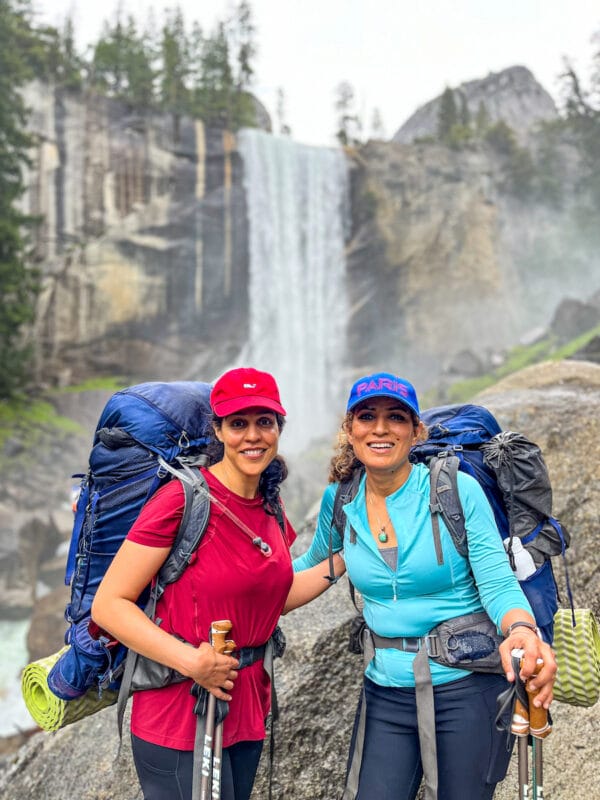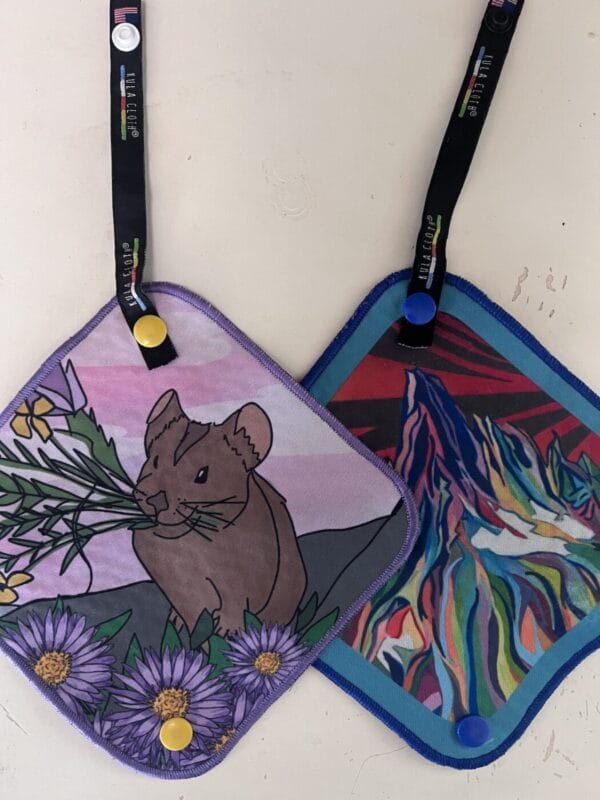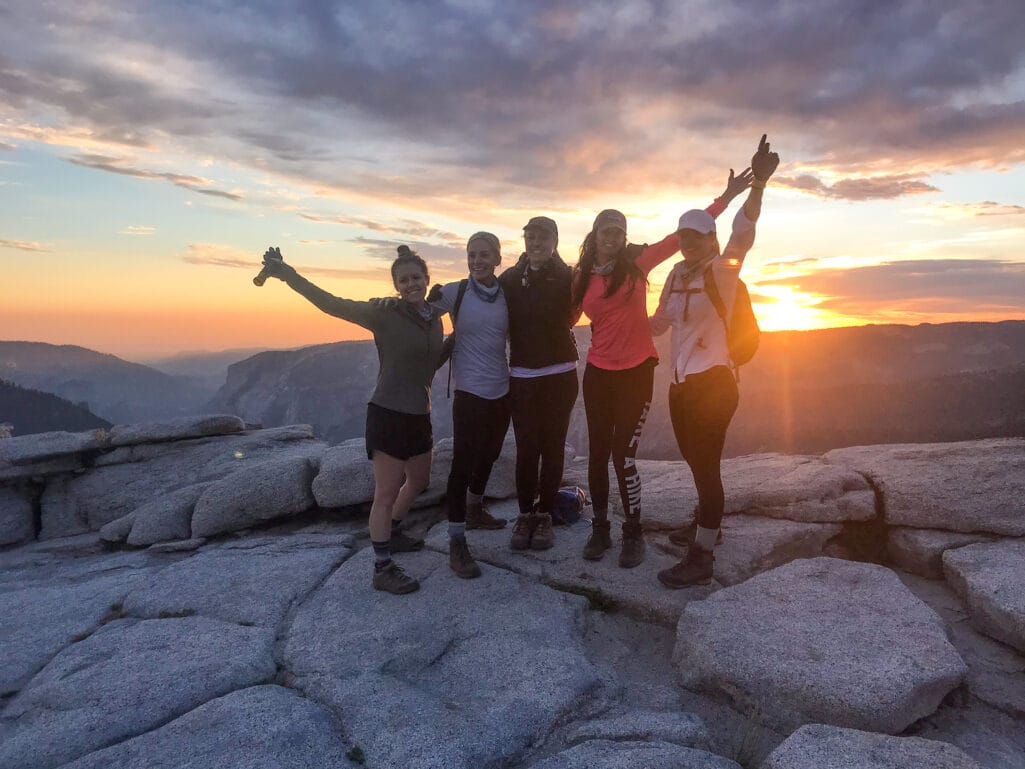Let’s face it: Men have long dominated the outdoor scene. But there’s actually one sport that has a pretty level playing field: backpacking. Although men will traditionally be stronger, women’s bodies are actually built for backpacking. Those child-bearing hips? Perfect for carrying the weight of a pack all day. The ability to withstand pain and carry on? That will no doubt help on the steep uphills when everything is burning. Women have been exploring the backcountry long before Cheryl Strayed stepped onto the Pacific Crest Trail—and we’ll only continue to carve out more space on the trail moving forward. Backpacking as a woman in the outdoors has its fair share of challenges, however. Challenges are meant to be overcome, so we’re going to share with you our best backpacking tips for women.
Get the Right Gear
Footwear
One of the things that will make the trip pleasurable versus a pain is making sure you’re comfortable along the way. A lot of that has to do with getting the right gear. Shoes are of utmost importance since you will spend a LOT of time on your feet. It doesn’t matter if you choose a high-ankle sturdy boot or a lightweight, cushy trail runner, the key is that they are comfortable and broken in BEFORE your trip. Just say no to blisters!
Backpack

A properly fitted backpack can also go a long way. Backpacks are not fitted by height or weight but by torso length. Many people are tall and have short torsos (myself included!). There are places online that describe how to measure your torso, or you can go into your local outdoor store and have them help you measure. A properly fitted pack will be worth so much after a long hiking day.
Sleep System
Regarding the end of a long hiking day, restorative sleep is your best medicine for waking up refreshed and ready to tackle new miles. Sleeping bags that are made for women actually have more fluff (down or synthetic) around the hips and at the feet based on how women sleep. If you’re a cold sleeper, never buy/borrow a men’s sleeping bag! Setting down that sleeping bag on an inflatable sleeping pad can really help if you’re a side sleeper. Closed-cell foam pads can work if you’re a back sleeper or like a hard mattress (i.e., the ground). Figure out what works for you and what will enable the best night of sleep.
The 10 Essentials
Pack the ten essentials whether you’re adventuring on a three-month long-distance trek or just a day hike.
- Navigation – map & compass
- Sun protection – sunscreen, hat, glasses
- Insulating layers – rain jacket, gloves, hat, base layers
- Illumination – headlamp or flashlight (cell phone doesn’t count!)
- First Aid Supplies – alter a pre-made kit for your trip
- Firestarter – matches or a lighter
- Repair kit – duct tape, knife (with scissors) and/or multi-tool, zipties, small sewing kit
- Shelter – tent, tarp, or bivy
- Food – that’s the fun part!
- Hydration – a bottle or bladder to put water in, water filtration, and electrolytes
Hygiene in the Outdoors
General Hygiene
One of the limiting factors sometimes for women really enjoying the outdoors is the fear of a lack of hygiene. That is not the case! Even though most days you will be sweaty, dirty, and smelly (and it will be worth it!), you can still freshen up every day. Jumping into a fresh body of water is one of the best ways to do this! On top of dips in water, bringing body wipes will make you less likely to miss that shower. Hand sanitizer should be plentiful to prevent germs from spreading, and a full hand wash can be set up at camp away from the water source.
Peeing Outside Like a Pro
Going pee outside for a female can sometimes be tricky. After years and years of practice, my current record for backsplash is about 6 out of 10. One of the first considerations when going to the bathroom is what you will use to wipe. There are multiple options here. You can bring toilet paper or wipes, but remember that everything that is packed in must be packed out (even if the toilet paper says it’s biodegradable!). Another really common (and cheap!) alternative is to use a handkerchief (I call it the pee-kerchief). After use, you hang the handkerchief from your pack, and the UV rays from the sun will dry it out and then rinse it every other day. A fancier version of the handkerchief is an antimicrobial product called the Kula Cloth. Similarly, you use it to wipe and attach it to your pack with snaps. Kula Cloths come in a wide variety of art to allow you to express yourself on the trail. Oh, and what is the best tip for avoiding the backsplash? Lean back while peeing on a slope. Trust me.

Periods on Trail
Period products have evolved over the years, presenting many options for enjoying the outdoors at that time of the month. The same rule applies to period products: what is packed in must be packed out. Maxi pads can be used but will be one of the bulkiest options for packing out. Tampons are really common. Just remember, all parts must be packed out as well. Period underwear could be used, but I don’t have any experience with them. Menstrual cups (Diva Cup) and discs are environmentally friendly options that don’t take up a lot of space but can be messy. When using these methods, it is recommended that you get familiar with them before heading out into the backcountry. Also, when disposing of menstrual fluid, you will want to dig a cathole as you would for human waste and cover it up afterward. At the end of the day, use what you are most comfortable with; just don’t let it hold you back from getting out there!
Safety

As tempting as it may be to flee to the mountains and start hiking, one of the most important things you can do is let someone know your itinerary. This is true whether you are hiking solo or with a group. Give your emergency person the name of the trails you’ll be on, when you expect to check in/be done, and whom to contact if the above doesn’t happen. If you are doing a solo backpacking trip, I recommend sticking to a popular trail where more people will be around. You never have to reveal where you are camping to strangers you meet on the trail, especially if you get a weird feeling. Trust your gut. I also highly recommend traveling with an emergency satellite device like an InReach Mini. Make sure you research the wildlife you might encounter in the area and what to do if you run into them. This includes what you’re allowed for protection. For example, in Glacier National Park, carrying and knowing how to use bear spray is essential, but it’s not allowed (or necessary) in Yosemite. A safety whistle, however, is allowed everywhere.
Preparation – Physical and Mental
Preparing Physically
This tip applies to anyone, regardless of gender. You wouldn’t enter a 10K three days in a row without doing any training. Many people go from couch to a 4-day backpacking trip and wonder why they hurt so bad. The best way to be able to enjoy your trip and focus on the scenery and not your screaming muscles is by training. This can include various activities, from hiking, rucking, running, etc., but should also include several weekly strength sessions. Focusing on strength exercises like squats and lunges will not only get you stronger for the trail but also help prevent injury. Another part of being prepared physically is making sure all of the logistics are handled. This entails everything from planning out your route ahead of time and packing the necessary gear to telling someone about your itinerary before you go.
Preparing Mentally
Preparing yourself mentally for what you might encounter and what you want to accomplish while you’re out there will ensure that you get the most out of your trip. You can’t predict any/all of the things that could go wrong, but you can prepare your mind to know that things WILL go wrong, and you’ll better enable yourself to deal with them when they do. That’s not to say that your trip could go off without a hitch and be absolutely perfect. If that’s the case, enjoy the heck out of it! But know that something powered by humans or nature might go wrong, and the beauty lies in the after. Know that it will be hard, but it will also be worth it. It’s the hard that makes it great.

Backpacking as a woman isn’t about proving anything—it’s about claiming your space, strength, and sense of wonder. With the right gear, mindset, and a bit of backcountry know-how, you can thrive on the trail. Whether you’re venturing out solo or with a crew, the mountains are calling—and they’re ready for you. Lace up, pack smart, trust your gut, and make some memories. You were made for this.
Interested in joining an all-women backpacking trip?

